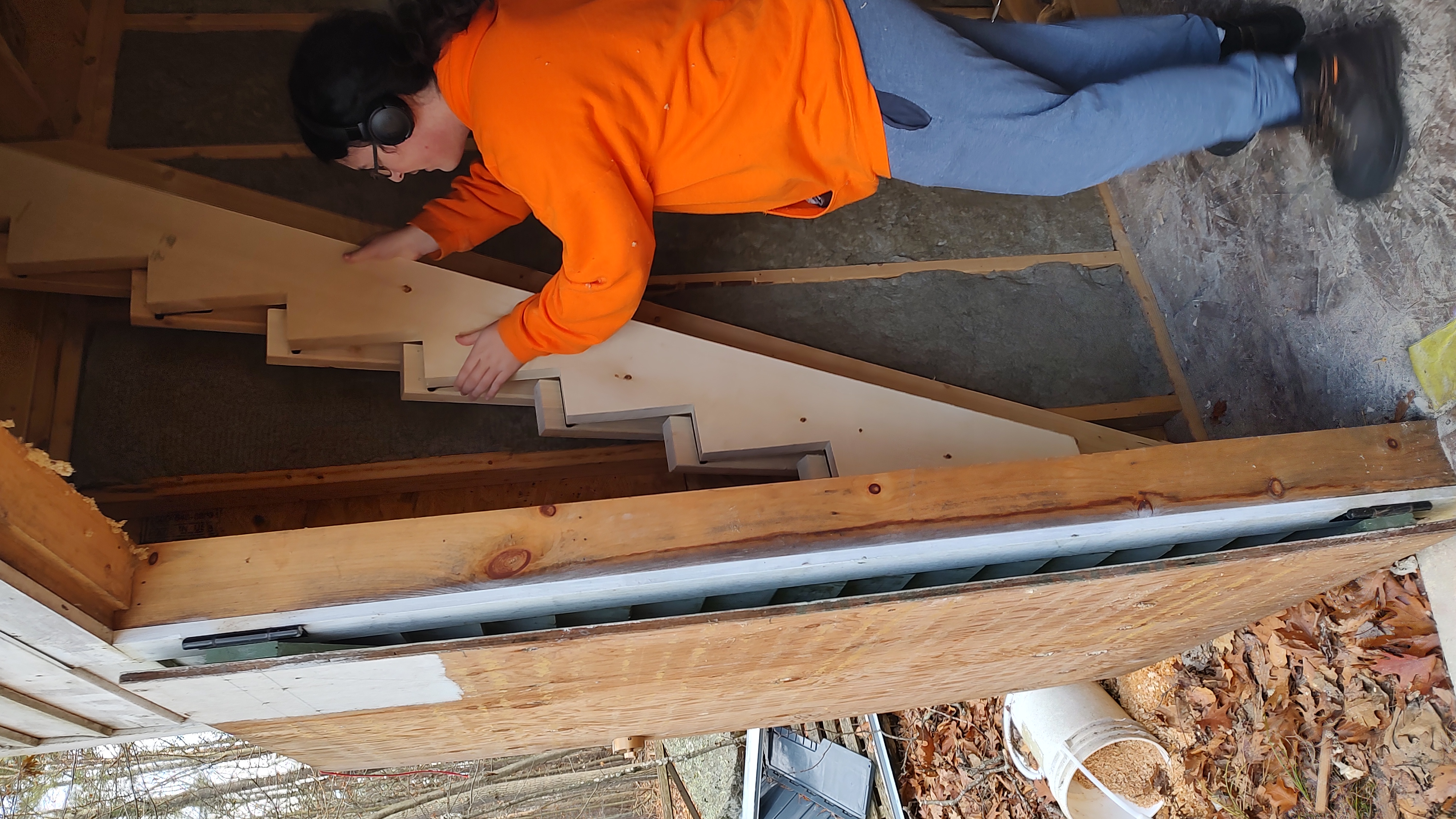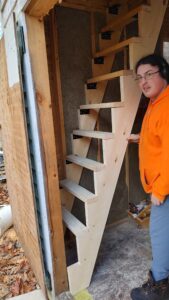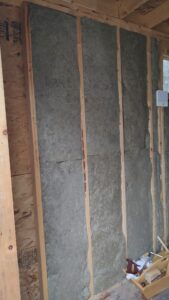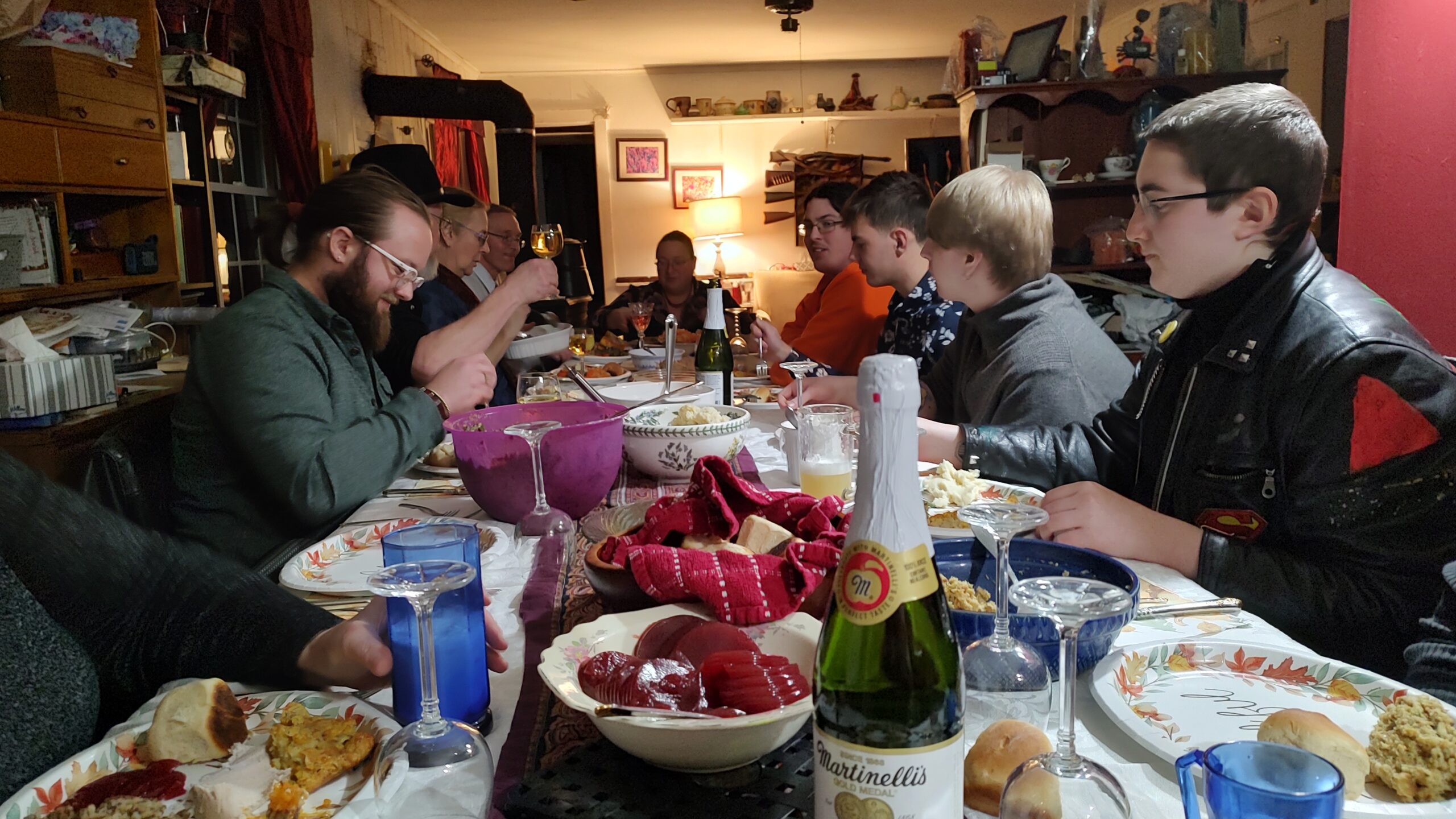From Behind Enemy Lines
Are we living in a bubble?
It is impossible to live in a bubble of conservative ideas and views. The left agenda is everywhere.
If you watch the news, even “conservative” Fox News, you’ll hear sops thrown to the left. If you watch network TV or streaming video, you’ll be exposed to the left’s viewpoint. It is impossible to avoid.
You can see this in bias reports on the net. How many extreme left-wing news outlets are there? They are nearly impossible to find, but extreme right? Those are listed for sites that are not. When the scale is -5 to 5 and there are no 5s listed, there is something wrong.
I know that I can argue from a leftist’s perspective. I’ve been exposed to it so often that it is just part of the social zeitgeist.
You don’t need to be exposed to more of that left-wing babble; I’m positive you can do it yourself. You’re not stupid. You have access to that zeitgeist the same as I.
What I’m not willing to expose myself to is what the left is saying in their spaces. I am unable to understand how they can have the opinions they do. I can see what they are doing, I can analyze it, and I can even duplicate it. I don’t understand them.
Ally has been providing me with a glimpse into their world for years. I still don’t understand them because frequently it makes no sense to me. “How can they believe something so obviously false?” “Don’t they know that it will fail and bad things will happen?” “Why don’t they see the consequences of their actions?”
You can duplicate it, but can you understand it?
So I would ask Ally to explain. Boy, my skull is thick. She will spend hours explaining something to me, and I just don’t get it. Then it will turn out to be some simple message or phrase that had a different meaning to her than to me.
The example we use between us is our abortion arguments. In particular, the phrase “late-term abortion”.
For me, this invokes the images of babies that could survive out of the womb being ripped apart, murdered, for the sake of the woman’s wishes.
Because Ally spent so much time in Canada in her youth, she had a different definition. The definition instilled in her from that culture, one that implied a much earlier date. This led to many arguments until we reached an understanding.
It is important to note that Ally’s impression of the laws does not match my research into those laws but in no way invalidates her feelings about what the law was.
I had to open my ears and listen. And that is difficult.
When I asked Ally to start writing for GunFreeZone.net and later the Vine, I told her that she was writing articles “From Behind Enemy Lines.”
What this meant to me was that I wanted her to tell me what she was hearing on her liberal feeds, what she heard in person from the liberals she interacted with, and what she was feeling as a thinking yet left leaning person.
I missed.
There was something more critical than just reporting the facts on the ground. She was reporting how those facts were influencing the left.
The Felon!
I’ll take a subject that is not controversial for her and me. Trump has 34 felony counts.
This is true. I don’t know anybody on our side of the line that gives a damn about it because it was a kangaroo court where the verdict was predetermined and the facts and laws modified to get that result.
State law was changed and manipulated to charge Trump. This is unconstitutional.
No Bill of Attainder or ex post facto Law shall be passed.
— U.S. Const. art. I, § 9, cl. 3 [PDF], No State shall enter into any Treaty, Alliance, or Confederation; grant Letters of Marque and Reprisal; coin Money; emit Bills of Credit; make any Thing but gold and silver Coin a Tender in Payment of Debts; pass any Bill of Attainder, ex post facto Law, or Law impairing the Obligation of Contracts, or grant any Title of Nobility.
— U.S. Const. art. I, § 10, cl. 1
[PDF]
— Calder v. Bull, 3 U.S. (3 Dall.) 386, 390–91 (1798) (opinion of Chase, J.)[PDF] (internal PDF pages 5–6)
What New York State did was to change the law to extend the statute of limitations and then proceed to turn a misdemeanor into a felony. Moreover, each count was for Trump’s signature. Sign a check, make a notation in his checkbook register, and that’s two counts. Paying the bill over multiple months, each month, two more counts.
So it doesn’t mean anything to us. It was a crime invented to charge Trump so that he could be stopped from becoming President a second time.
But how does a leftist view this? They don’t care. They hear, they believe, and they know he is a criminal. More importantly, they know that no criminal should ever be allowed to be the President.
He is called “the felon” by many on the left because this is part of their belief system. And if you don’t see it the way they do, then you are deranged.
Ally is here to provide that link, that grounding, that glimpse into their delusions.
FAFO?
When I first read Trump’s posts regarding the traitorous six, I heard him accuse them of a crime and provide the maximum penalty for that crime.
I heard it as a reaction to those despicable, vile, disgusting worms that were inciting rebellion in the ranks.
He never said, he never implied, and he doesn’t even say he wants them executed. He stated the maximum penalty.
It doesn’t matter how true everything I just wrote is. It doesn’t matter what his actual intentions were or what he actually does.
To the left, the only thing that matters is what they hear. And they heard him threaten to execute those six putrid tapeworms.
That is what Ally heard. Reality doesn’t matter. That is what was heard; that is what they react to.
If you don’t know and understand that reaction, then you can’t interact with those that do.
What they hear is what they remember
A principal once accused me of threatening her with physical violence over the phrase “jump down your throat”. It was never a physical threat; the phrase has always meant verbal arguments, often loud arguments. She heard a threat. She reacted as if it was a threat. It doesn’t matter the reality.
I learned this lesson the hard way many years ago. I was talking to a girl and had set up a date with her. When I arrived at the bar to pick her up for our date, she was hanging out with some friends of ours telling a story. I listened, participated, and waited for her to get done. When she got done, I asked if she was ready to go. She said no; she had decided she didn’t want to go. I told her I was disappointed in her. In her making a promise and then changing her mind at the last minute.
That simple statement, “disappointed in her”, was devastating for her. She had been abused by her mother, and one of the mental abuses her mother would heap on her was about how disappointing she was.
It didn’t matter how gentle I thought the wording was; all that mattered in our communications was what she heard.
Listen to what she says
So when Ally writes something from behind enemy lines, she is showing us what the left is saying but, more importantly, what they feel and believe.
I’m glad for her additions to The Vine of Liberty.
Happy Friendsgiving
Feast time. We spent the entire day preparing, and then people showed up. Then more people showed up.
I hope you are having a wonderful Thanksgiving weekend.
Question of the Week
We are having Friendsgiving this evening. It is a small gathering of around 16 people. It could be as high as 20 but still on the small size.
Many of you, I’m sure, had Thanksgiving on Thursday.
What was the most uncomfortable subject you dealt with? Did you have to deal with NPCs spouting the talking point of the day or did you escape that part of hell that the Left has turned Thanksgiving into?
Stairs Are In Use!
I had originally designed this so that the treads would be supported entirely by the hinges, on both stringers. After putting the first two treads in place, I changed my mind.
With the original design, you would be able to rotate the outside stringer 180° to create a flat 1.5 in. bulge from the wall when folded. The same width of the stringers and treads. I didn’t like the path of the outside stringer during that folding process. Instead I extended the tread to overlap the outside stringer.
You can see this in the feature image of the stairs folded against the wall. The treads are 1.5 inches above the outside stringer.
The stairs now unfold with a bit of force to move the foot of the outside stringer slightly. I will likely trim that back just a little to allow it to clear the front wall with real clearance, not pretend clearance.

With the stairs fully extended, you can see there is zero space to get onto the steps.

The space was so tight, I didn’t even put a tread on for the bottom. The current method to mount the stairs is to put your left foot on the stringer where that tread should be, then step up with your right foot onto the second step which gives you clearance to rotate and go up the steps.
The fix is pretty simple. I’m going to extend the first tread out 6 inches; for those paying attention, the WLL for that amount of cantilever tread is 600 pounds. I might do the same for the second tread. This will give me two steps forward before I have to rotate my fat ass into place.

Once on the steps, it is an easy walk up into the loft. I can almost stand up right at the high side of the loft. The steps feel very solid. My son did the jump up and down test. I panicked, but the stairs didn’t care. They are overbuilt, like an engineer worried about the extreme load.
At this point the WLL is not limited by the hinges. In this configuration all the forces are in shear. On one side that shear force is on 4 #8 screws with plenty of meat under each screw. There is very little, if any, withdrawal force on the screws. The hinges are not the weak link.
The 1.5 by 4 inch tread of Eastern White Pine is 18.5″ of unsupported span. This puts the center at 9.25″. The WLL for a 90% live load at the center of that beam exceeds 600 pounds. As stated above, the cantilevered steps also have a WLL of over 600 pounds. There is a safety factor of more than 2 in all calculations.
The biggest concern is how something like this will stand up to forces over time. The normal calculations are based on multiple uses per day. These steps are unlikely to be used more than a few times per month.
All in all, I’m happy with how they turned out. It was a pain learning how to make stairs properly. It was very tedious building, as each hinge has to be in line with every other hinge so that they will work in unison. I’ve used up all the tolerance those hinges had.
I think the biggest issue I had while building the stairs was switching drill bits. Put the hinge in place, and drill a pilot hole that is centered where I want the hinge. Switch bits to the Torx driver. Drive screw. Use a level to position the hinge correctly. Switch bits. Drill the other pilot holes. Switch bits, drive the screws.
Rhetoric
We use rhetoric to move people. To inspire. To convince people to change. This is a part of the protected free speech codified in the First Amendment.
The courts, throughout the years, have leaned heavily on more speech to counter unpopular speech. Until they didn’t.
Like today, the courts have agendas, not always good agendas, not always in favor of The People. For a while, there were entire classes of speech that were illegal. Sometimes directly and sometimes indirectly.
The indirect path was “Criminal Syndicalism”.
—Brandenburg V. Ohio, 395 U.S. 444, 444–45 (1969)
In summary, a man called the local news and asked if they wanted to do a report on a Ku Klux Klan meeting. The reporter said yes, brought his cameraman, and they filmed the meeting. During the meeting, the man wore a hood and said lots of Klan-like things, burned a cross, all while open carrying. After the main event, the leader, still wearing his hood, gave a short speech, two paragraphs long. Part of the speech was a statement that they were going to march on Congress on the 4th of July and then split into two groups to march into Augustine, Florida, and Mississippi.
This was aired. Then a second rally was filmed with the same type of speech given, also aired.
The leader was arrested, charged, and then convicted in a court of law. His appeal to the Ohio appeals court was granted, but they affirmed the lower court’s decision. The case then went to the Ohio Supreme Court, where they also affirmed the lower court’s opinion. Finally, the case was appealed to the Supreme Court on constitutional grounds.
In 1927 the Supreme Court upheld California’s Criminal Syndicalism Act, finding that advocating violent means to effect political and economic change involves such danger to the security of the State that the State may outlaw it. Whitney v. California, 275 U.S. 357 (1927), and Fiske v. Kansas, 274 U.S. 380 (1927), both gave this power to infringe on speech to the State.
Later Supreme Court cases, Dennis v. United States, 351 U.S. 494 (1951), for example, thoroughly discredited the Whitney opinion.
These later decisions have fashioned the principle that the constitutional guarantees of free speech and free press do not permit a State to forbid or proscribe advocacy of the use of force or of law violation except where such advocacy is directed to inciting or producing imminent lawless action and is likely to incite or produce such action.
—id. at 447.
In other words, the speech must incite violence or lawless actions imminently.. What imminently means is not clear and is the reason lawyers make big money.
Reversed.
—id. at 449
This is the current case law (IANAL). It is what we judge protected speech by. Is the person inciting violence or the breaking of the law?
A statement of “Kill Bill!” when Bill is over there is clearly incitement. It is imminent, and it is a call for violence as well as a call for breaking the law. If Bill isn’t there, this might not be incitement because it is not imminent. In the same way as “Kill the one-horned, one-eyed, purple people eater” isn’t incitement because that entity isn’t real.
I am more than willing to say, “The only good communist is a dead communist.” I am not asking you to kill communists; I’m not even saying that I am willing to kill communists. It is simple rhetoric.
What if I go a step further, though? What if I were to say, “It is OK to kill communists.” This is still just this side of incitement. There is no imminent aspect, and there is no target.
And this is precisely what we have been hearing for years from the left: “It is OK to punch a Nazi. You should punch Nazis. If you see anybody from that Cabinet in a restaurant, …, And you push back on them.” These are not incitement, as they sit. There is no target in the first two, and in the last, it is not a call for violence. Just simple verbal confrontation.
But these things do not exist in a vacuum. They live within a context.
When that same group assigns a label, they can then attack that label. When one part of a group is calling you a Nazi and the other part is calling for the death or merely the beating of Nazis, it does rise to the level of incitement.
This is the classic two-step incitement pattern that courts, linguists, and political psychologists have studied for decades. Step 1: Dehumanization/Labeling. Step 2: Invocation of the “Accepted Remedy”.
When the left and the media trumpet, over and over again, that Trump is issuing illegal orders, this becomes part of the context. The media pushes the “Bush-appointed Judge halts Trump’s order, finding that he is unlikely to win on the merits.” to the front page. The Supreme Court slapping down that selfsame judge might get a paragraph on page 6, right under the ad for hemorrhoid cream.
This is the context that the six senators have taken advantage of; they created a simple video reminding military personnel that they are bound to the constitution and that they are required to ignore “illegal orders”. They can dishonestly claim that they aren’t calling for the troops to ignore Trump’s orders, but within the context, that is exactly what they have done.
Trump’s statement, on the other hand, isn’t an attack or an incitement. He has accused those six senators of a crime and stated the penalties for that crime. Only if they are found guilty of that crime are they at risk for that most final punishment.
But Trump, being Trump, didn’t cite to the code. He didn’t explicitly state what law the senators broke. This leaves vast amounts of wiggle room. And Trump could be wrong. And he likely got the punishment wrong. Regardless, it doesn’t rise to the level of a threat and is protected speech.
And here is where we start to have issues. I know that Trump is a flawed human. Just as Reagan was a flawed man. They can be heroes of mine without being my gods. I might agree with 99% of what they say or do; that doesn’t mean I will agree with them every time.
The left doesn’t think that way. Their heroes don’t walk with us. Their heroes don’t have feet of clay. Their heroes float above us, giving us the wisdom of the ages. They have their Ministry of Truth, their own Minitrue, to keep their heroes halos shining brightly.
But there is a third part of the equation that we don’t talk about. That is the audience.
When these talking heads, politicians, or party leaders speak, they are speaking to an audience. When some talking head says that “MAGA is falling apart,” they are not talking to you and me; they are talking to their audience. The fact that I hear their words doesn’t change who their audience is.
My parents were part of that leftist audience; they knew Trump 45 was bad. They knew it because they heard it from all the people they heard talking about Trump. I wasn’t a part of that audience. I heard the same words, I heard the same spin, I heard the same lie. I went looking for the truth, and found it wasn’t what I heard from “everybody”.
In the same way Trump talks to his audience. But there is a huge difference when he speaks to us. The media and talking heads all tell us what Trump really meant. They hear the same words and twist the message to meet their needs, not the needs of The People.
There is another, more significant difference. The audience of the left is prone to violence. The audience of the right is not.
The number of people in the left audience willing to do violent acts is huge. There are members of the right audience that want to react violently but not initiate that violence. The FAFO policy. Or as I learned from my parents and as I taught my kids, we don’t start fights; we end them.
Where I see conflicts forming is in my trust of those audiences. I trust the left to do violent things. I trust the right to be prepared and willing to provide FA, but not to initiate that violence. If you don’t have that trust, there are problems.
Unfortunately, that problem is about that crazy dude over there. There are crazies on both sides. If we care about optics, if we care about people, we don’t celebrate violence inflicted on others. This helps contain the smaller number of crazies on the right. The left glorifies their crazies.
Just look at the hero worship over a man who killed a CEO. That is simply evil.
Conclusion
I’m tired, and I believe that many on the right are tired of playing nice because the left will think badly of us. They already think badly of us. It doesn’t matter what we do; we will always be evil to them. For those in the middle that might look at the tired response of “Well F you right back” as being the same, we can’t roll over anymore. The only way forward is to fight back.
It doesn’t matter how many times they tell the same old lie, we still have to say “That is a lie.” It is long past time to stop being the doormat to the left.
Stairs Are Still Hard
Let’s get going. First, the bare wall.

We have a 101.25″ rise and a maximum run of 43.75 inches. We cut the master stringer and lean it against the wall and hold up a hinge and fake tread to give you an idea of what will happen.



You can’t actually attach the hinge to the stringer or the stringer to the wall until you have used the master stringer to trace the other stringer. The SKIL 20V brushless circular saw is underpowered, and with the 2Ah battery it comes with, I can’t even cut a single stringer. Thus the delay in getting the stringers and treads cut.
I’m worried about how this will all work when done, but I’m moving forward. Here it is with most of the hinges attached to the wall stringer. The lowest hinge is not attached, but you can’t see that. Three treads have been attached to the wall stringer and two to the moving stringer.

I’ll be doing the bottom step and the top step next, but this is proof of concept. Here it is in its mostly folded mode.

I didn’t have it exactly right, but it does go up further. I expect it to get easier as it gets less wobbly.
Tuesday Tunes
Cardi B dropped a song in 2020 called “WAP” because Wet A__ P___y still can’t be said in respectable company.
Cardi B had nothing on earlier generations.
If you want something even more explicit, warning, audio quality is poor:
Pay it forward
One of the biggest differences between conservatives and leftists/progressives is charity. We reach into our wallets; they reach into yours.
For years I heard Democrats screaming about how horrible it was that the wealthy were taking advantage of tax laws by making charitable contributions. At a time when I was getting taxed at 45 cents on the dollar, giving $100 to a charitable cause only cost me 65 dollars. I think.
Whenever I have given money to charity, I’ve done it locally.
My son fell in love with The Magic Tree House series; he was reading them at the school. I went to B&N and told them what I wanted to do. Together with B&N, we were able to give a complete set of the books to the school. I think it was about 50 books.
I’ve donated to the local food pantry, and I’ve given to local churches. If there is a good group selling something to make money, I’ll often donate three times what they would have made from selling me something I didn’t want.
When my son was pushed to go door-to-door to sell something to raise money for the school, I met with the principal to find out how much they made per dollar of goods sold. It was around 20%. My son would have had to sell nearly $500 worth of junk to be part of the ice cream reward. I gave the school $250, and told them to make sure my son got ice cream with the rest.
But that’s about me giving. I had reasons, not just for my community, but directly for my family.
Paying it forward is helping someone with no expectation of any return or good coming to you or yours. You ask them to help someone else out, sometime in the future, when they can.
With the government shutdown, friends of the family were hurting a bit more than usual. They only get around $60/month in SNAP because they “don’t qualify” for any more. They haven’t looked into how to get that increased because they are embarrassed to be on assistance.
We found out and as a family decided they needed help and that we would provide that help. Most of what we provided came from our stores, some came from purchases. A neighbor heard we were doing this and pitched in some cash.
The recipient has a gluten allergy, so pasta and such were out.
- 10# dried beans
- 10# white rice
- A flat of canned tuna
- A flat of canned chicken
- A flat of canned turkey
- 6 cans of beans
- 3# of short ribs
- 1# of rib roast
- 1 15# turkey
- 2# of sugar
- Gluten free brownie mix
- Misc. canned vegetables
To this we added eggs, milk, fresh fruit, fresh vegetables, frozen vegetables, and some other stuff, plus the cash from the neighbor.
That is not a complete list, but it gives an idea. When we got there and started bringing things in, we found her fridge was empty of everything except condiments. Her pantry was just as empty.
She will do the right thing. Because she understands, this is around two months worth of food for her, minus the weekly things like eggs.
Our total out-of-pocket cost for this gift was less than $50 because we are always adding to our stores. I get a flat of canned something every month. During this time of year, we pick up cheap turkey and fill freezers with it. We would have given her a ham as well, but she doesn’t like ham.
Our neighbor gave cash, which covered the fresh food and still gave her spending cash she would not have had any other way.
Yes, your taxes are taken from you at gunpoint to be given to both undeserving and deserving people. Don’t stop there. Make it personal. There is somebody in need in your community. Somebody that can use a hand up and isn’t looking for a handout.
Find that family. Give a little of yourself. Pay it forward.









